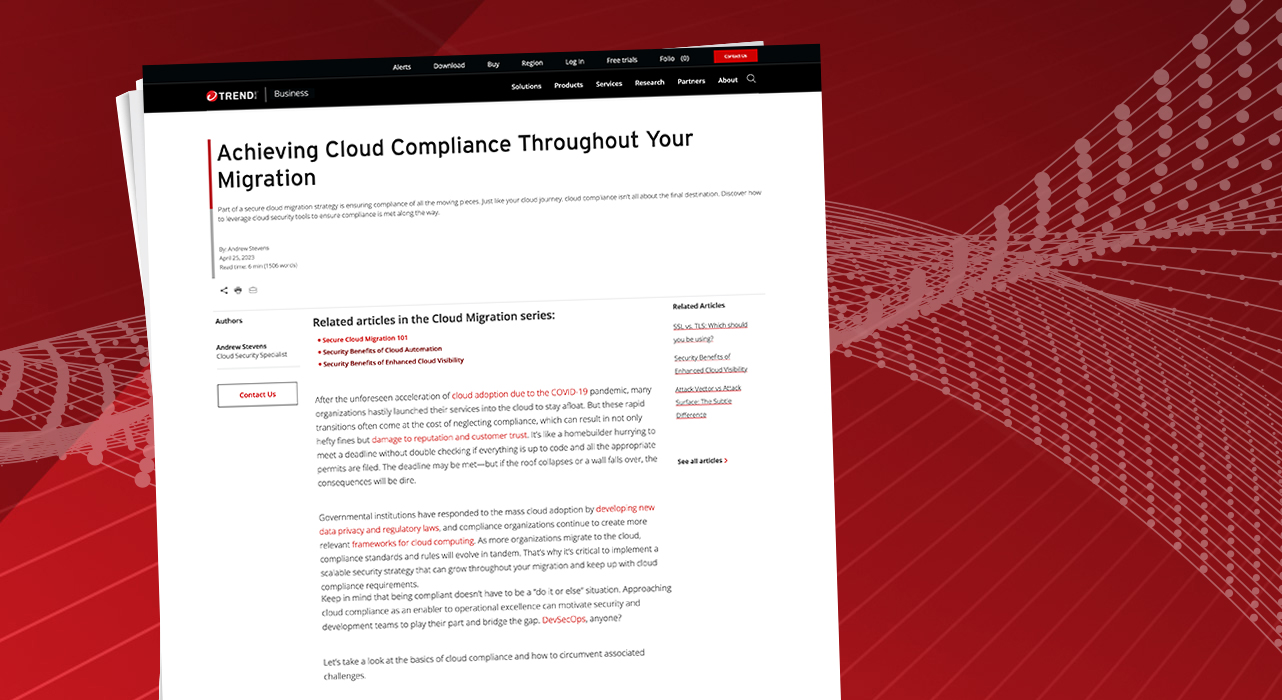- These earbuds sold me on the open-ear form factor (and sound great for the price)
- 3 Apple Intelligence features that would convince me to ditch Gemini and ChatGPT
- Over 90% of Top Email Domains Vulnerable to Spoofing Attacks
- How to screen record on your iPhone - it's easy
- ¿Están los CIO sucumbiendo al peso de las expectativas de generar valor empresarial?
Achieving Cloud Compliance Throughout Your Migration

So, where do you start? Your first step should be identifying which security tool will best meet the needs of ever-changing compliance standards and will keep up with your evolving infrastructure. As we discussed in our last article, a security services platform is ideal. Here’s how it can help you with the four compliance challenges we mentioned earlier:
Challenge #1: Data transfer ─ Localized protection
Unlike point products, a platform can be deployed across multi- and hybrid-cloud environments so you can run continuous scans and audits to ensure compliance, wherever your data may be.
Challenge #2: Data visibility ─ Enhanced insights
On-premises solutions only provide network-level insights, and your cloud service provider (CSP) can’t tell you the entire story due to privacy concerns. A platform enhances visibility across networks, security layers, and more so compliance issues can be identified and remediated quickly.
Challenge #3: Data security responsibility ─ Automated guardrails
Say goodbye to the tedious task of manually monitoring, configuring, and maintaining your systems to stay compliant. Automated operational controls also ensure rules are enforced at scale—so you stay compliant as your business grows.
Challenge #4: Data access ─ Centralized identity and access management (IAM)
One console for easy management of all your permissions, accounts, passwords, and policies. Think of it like a thermostat in your home—one place to control the temperature—versus radiators in each room that must be individually monitored and managed.
The next step is identifying which platform is best. There’s no shortage of offerings available, but they’re not all equal. To achieve your cloud compliance goals, look for specific features and functions, such as:
- Intrusion detection and protection for each sever across every type of cloud environment, examining all incoming and outgoing traffic for protocol and policy violations or content that signals an attack.
- Virtual patching is like stopping a leak with heavy-duty plumbing repair tape while you wait for a plumber to come out and actually fix it. In this case, a virtual patch provides an extra layer of security against vulnerabilities while you wait for the official vendor patch. This helps you avoid any additional exploits that try to target the vulnerability
- Integrity monitoring for critical operation system and application files (directories, registry keys, and values) to detect and report unexpected changes in real time.
- Malware prevention that leverages file reputation, behavioral analysis, machine-learning, and other advanced techniques to protect your systems.s
- Localized/specific compliance measures across the broadest range of industry, geographic, and cybersecurity regulations and standards.
- Advanced threat intelligence as part of the platform for visibility into the entire threat landscape to protect against current and future threats.
Remember, you are solely responsible for securing and maintaining compliance for your data. You wouldn’t close your eyes and pick any home in a real estate flyer to purchase, so evaluate all your options carefully to make sure that your security and compliance needs will be met today, and in the future.
In the cloud computing world, conforming to compliance standards and regulations sets you up for success.
Trend Cloud One™ – Conformity can help you follow the rules to avoid breaches and fines while driving innovation and bridging the gap. Conformity is one of eight security solutions that compose the Trend Cloud One™ platform:
Check out how Conformity can help tackle the four compliance challenges:
Challenge #1: Data transfer
Monitor the compliance of all your cloud environments across different regions from one dashboard, so you can identify and remediate unwanted vulnerabilities and build to industry best practices.

